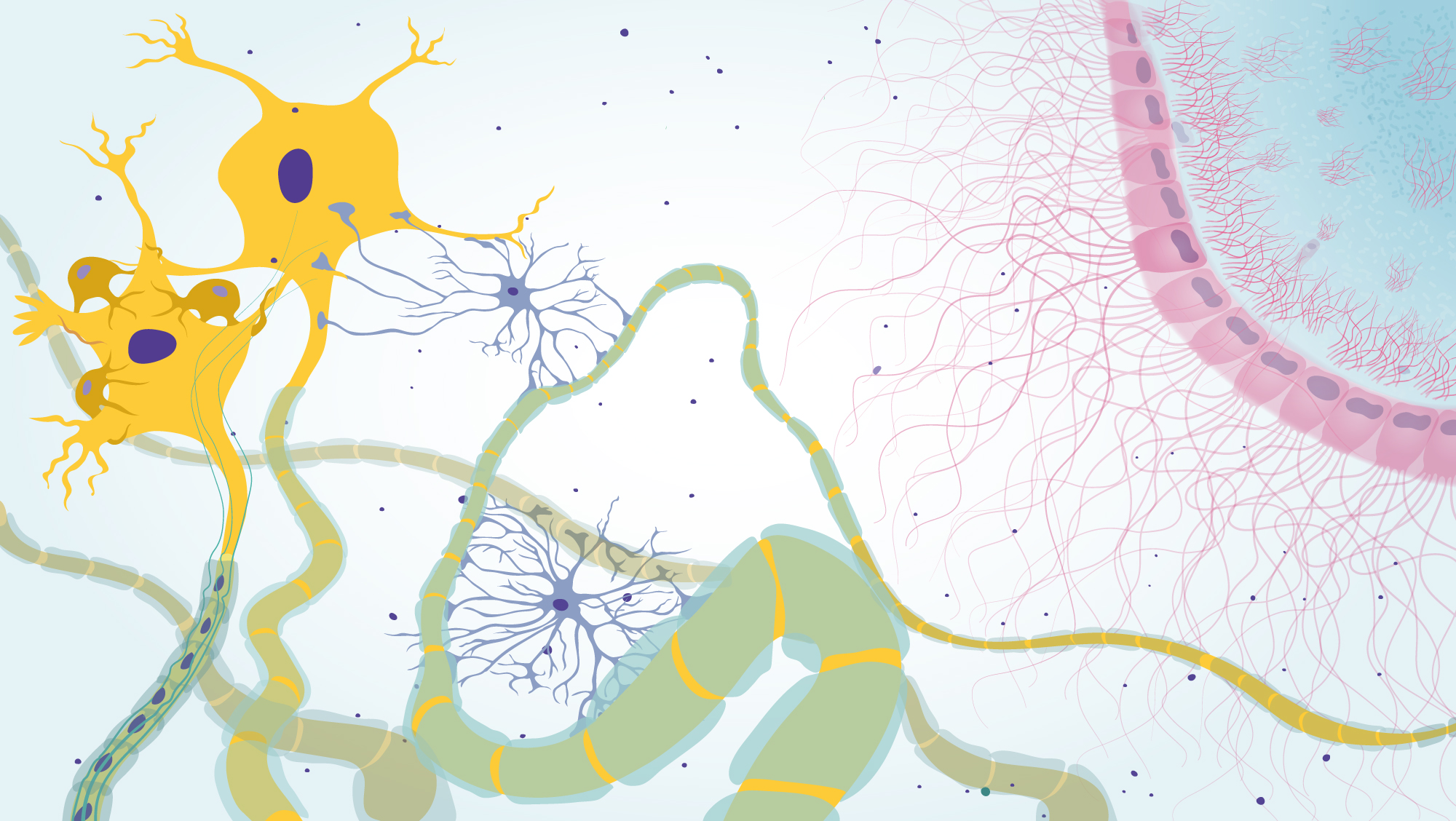
Everything you do, seeing, smelling, moving muscles, talking, even thinking and your emotional responses involve the nervous system in some way. Other processes taking place inside our body that we don’t think about such as digestion of food or regulating temperature are all controlled by the nervous system. This means that changes in nervous function can have important implications for both our physical and mental health. Therefore it is important that we gain an understanding of the structure and function of this important component of the body.
The nervous system is composed of nervous tissue. This tissue is the main component of the brain, spinal cord and the nerves that are spread all over the body.
Nervous tissue is composed of two main cell types; nerve cells and glia cells. Nerve cells, often called neurones, are specialized cells that generate and propagate nerve impulses throughout the brain, between the brain and the spinal cord and between the spinal cord and the body’s various organs and tissues. Glial cells, on the other hand, do not generate or conduct nerve impulses, but function to protect, nourish and support nerve cells in various ways.
In this resource we will provide a simple overview of nervous system structure and function. We will then go on to look at the different type of cells that nervous tissue is composed of. Lastly, we will look in more detail at how nerve cells function to generate and send impulses.



